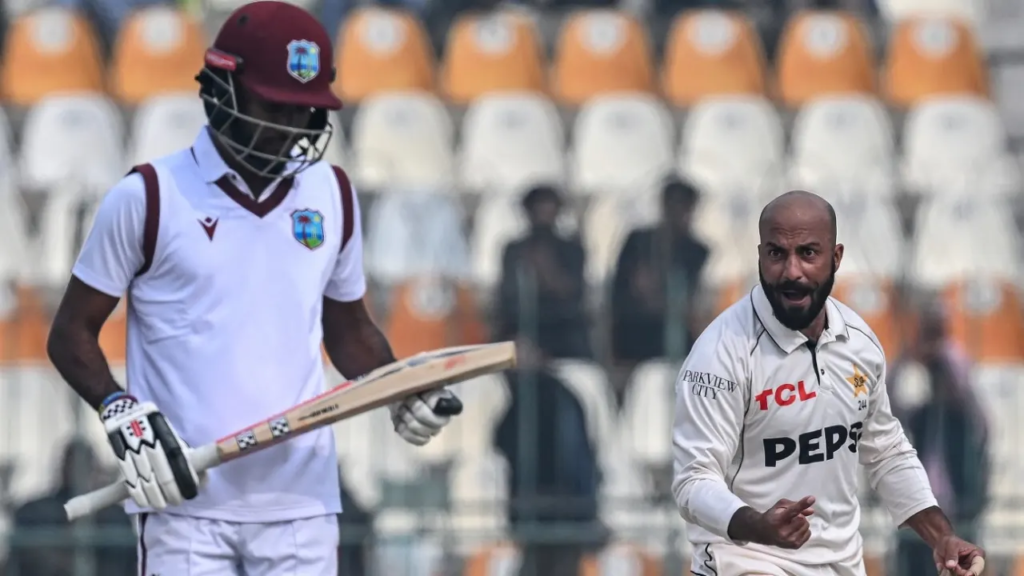
Kraigg Brathwaite disappointed with his side’s game vs spin and their inability to adapt and play on spinning conditions.
Kraigg Brathwaite laments inability to adapt to spinning conditions and urges his batters to be braver for the second Test.
Brathwaite did not duck behind the elephant in the room, but he also did not ignore it. Immediately after, he acknowledged that Pakistan had “prepared a dry spinning pitch from day one” and challenged his bowlers and hitters to better adjust to it in the second Test.
“We expect the same type of pitch in the second Test and we’ve got to come better,” Brathwaite said at the post-Test press conference. “It was a difficult pitch to bat on for sure. But it’s their decision how they want the pitch. We’ve just got to come good.”
The fact that the West Indies could, for the most part, meet their hosts on an equal footing inspired Brathwaite. Despite Sajid Khan and Noman Ali taking wickets, West Indian left-arm spinner Jomel Warrican had the greatest bowling statistics of the Test. His 7 for 32 second-inning total is the third-highest ever by a visiting bowler in a Test match in Pakistan.
The biggest difference between Pakistan’s second innings score of 157 and West Indies’ 137 and 123 at bat was the first innings’ fifth wicket stand of 141 between Saud Shakeel and Mohammad Rizwan.
“It’s great to see. Jomel has worked extremely hard over the years and it’s good to see he got his first five-wicket haul. His hard work has paid off. He bowled well; he was consistent. I wish him all the best in his second test match.
“I do think we could improve bowling wise. We gave them 50-60 runs too much in the first innings because the pitch spun from ball one and we could have created enough pressure on the batters to get more wickets. Saying that, we also didn’t bat as well as we could. I think Alick [Athanaze, whose fourth innings 55 was West Indies highest individual score] showed us today how easy it can be. You’ve got to be braver in your shot selection. But I think a better all-round performance and we could win the second Test.”
Although he didn’t stick to that plan, the West Indies might try to use more of it next week. As each innings went on, they started to incorporate prudent aggression into their batting. West Indies’ most destructive batting phase occurred when the tenth wicket combination put on 46 in 21 balls, taking the spinners on when they flighted the ball. Other hitters found that using reverse sweeps from outside the line was a useful way to get runs.
“The ball was ragging, so one is going to have your name on it regardless. The pitch was difficult as you could see. It was very dry before even the game started. So I’m not surprised with the game finishing early.”

